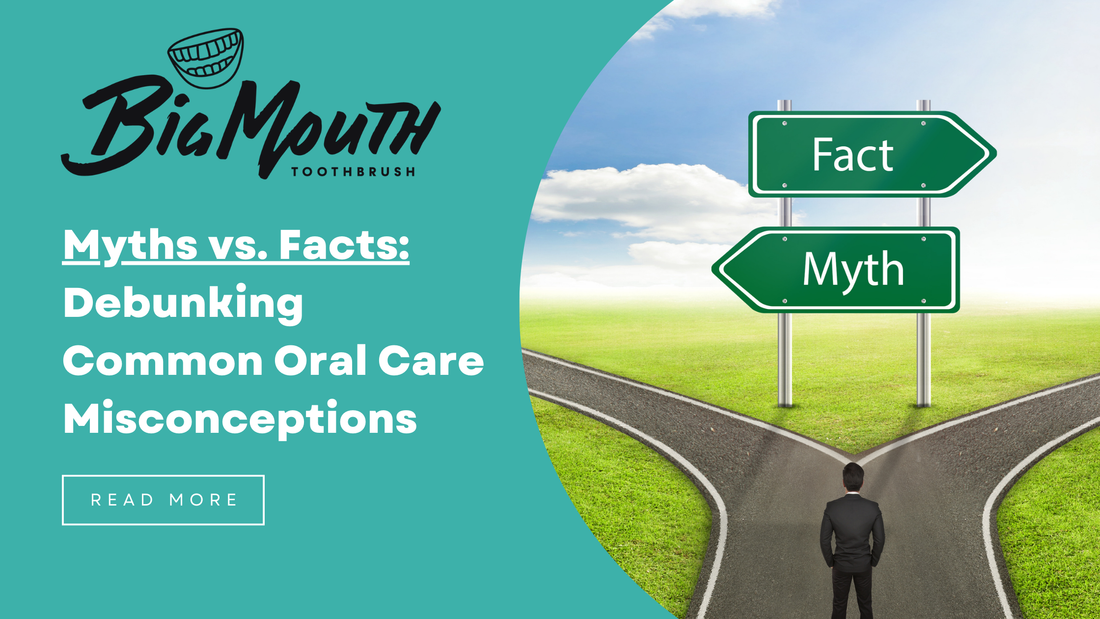Oral health is surrounded by numerous myths and misconceptions that can lead to improper care and avoidable dental problems. Understanding the facts is crucial for maintaining a healthy smile. Here, we debunk some of the most common oral care myths with the facts you need to know.
Myth 1: Brushing Harder Cleans Better
Fact: Brushing your teeth harder doesn't clean them better; it can actually damage your tooth enamel and irritate your gums. Use a soft-bristled toothbrush and gentle, circular motions to effectively remove plaque without causing harm.
Myth 2: Sugar is the Sole Cause of Cavities
Fact: While sugar plays a significant role in cavity formation, it's not the only culprit. Cavities are caused by acids produced by bacteria in your mouth, which feed on carbohydrates, including sugars and starches. Good oral hygiene and limiting carbohydrate-rich foods can help prevent cavities.
Myth 3: You Only Need to See a Dentist if You Have a Problem
Fact: Regular dental check-ups are essential, even if you're not experiencing any problems. Routine visits help catch issues early, prevent dental diseases, and maintain overall oral health. Aim to see your dentist at least twice a year.
Myth 4: Flossing is Optional
Fact: Flossing is a critical part of oral hygiene. It removes plaque and food particles from areas your toothbrush can't reach, reducing the risk of gum disease and cavities. Make flossing a daily habit for optimal oral health.
Myth 5: Mouthwash Can Replace Brushing
Fact: Mouthwash is a helpful addition to your oral care routine but it cannot replace brushing and flossing. Mouthwash can freshen your breath and reduce bacteria, but brushing and flossing are necessary to remove plaque and prevent cavities and gum disease.
Myth 6: White Teeth are Healthy Teeth
Fact: White teeth are not always synonymous with healthy teeth. Teeth can be white but still have underlying issues like cavities or gum disease. Regular dental check-ups and good oral hygiene are essential for healthy teeth, regardless of their color.
Myth 7: You Should Brush Right After Eating
Fact: Brushing immediately after eating, especially acidic foods, can harm your enamel. Wait at least 30 minutes after eating to brush your teeth, allowing your saliva to neutralize acids and protect your enamel.
Myth 8: Bad Breath Means Poor Oral Hygiene
Fact: While poor oral hygiene is a common cause of bad breath, it can also result from other factors such as dry mouth, certain foods, or medical conditions. Regular brushing, flossing, and staying hydrated can help, but see your dentist if bad breath persists.
Myth 9: Dental Treatments During Pregnancy are Harmful
Fact: Dental care during pregnancy is safe and important. Hormonal changes can increase the risk of gum disease, which can affect your pregnancy. Inform your dentist if you're pregnant, and maintain regular dental visits to ensure both your oral health and your baby's well-being.
Myth 10: Children Don’t Need to See a Dentist Until Their Adult Teeth Come In
Fact: Children should have their first dental visit by their first birthday or when their first tooth appears. Early dental visits help monitor the development of their teeth and gums and establish good oral hygiene habits.
Dispelling these common oral care myths is crucial for maintaining a healthy and radiant smile. By understanding the facts and following proper oral hygiene practices, you can protect your teeth and gums, ensuring long-term oral health. Remember, regular visits to your dentist and a consistent oral care routine are key to a beautiful, healthy smile.


